#taken with the 50mm
Text
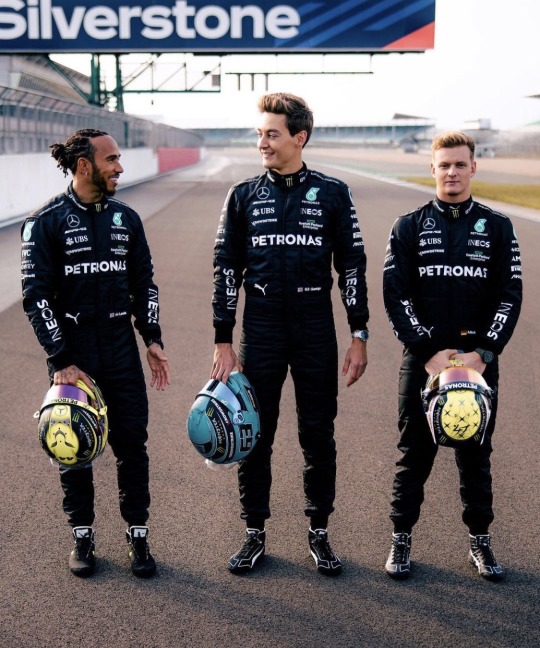
if mick is taller than seb and seb is taller than lewis then how does mick look shorter than lewis. the maths isn’t mathing
#me @ merc admin what lense was this taken with#is it a 50mm#let me innnnnn#i'm doing important equations etc
30 notes
·
View notes
Text

So I may be up to something...
(The die on the right is a 30mm chonk for scale)
#guess who has unlimited access to a 3d printer now#it's an fdm printer which isnt considered ideal for dice masters but I'm making it work#which is why this has taken so long to make#i think I'm at like two weeks in so far? admittedly some breaks from flare-ups but still#I'm also making a second style and have to do a 12-hour print just to make the mold system i need for this#theyre 50mm#about the size of a baseball#and i have the rounded liquid-core masters printed already#i have yet to try to do the shaped ones#only because i haven't gotten around to it not because I'm worried about it#i have a lot of ideas with these and i hope i can make them work#also peep new font variant#it's closer to the original font i made when i first made masters for myself#dice#polyhedral dice#dnd dice#artificer dice#handmade dice#d20#mj's shop talk#also the cup in the background is one i designed and i really like it
12 notes
·
View notes
Text
finding myself struggling with a 35mm lens. it just seems way too wide for some reason.
#it used to seem so natural to be at some point last year#like 90% of my pics were taken at that focal.lenght#now i'm more in the 85mm range i guess#hmmmmm#weird how that happens#funny cause 50mm used to feel waaay too tight for me when i first started
0 notes
Text

A ribbon corset has been on my list to make for a good few years now. In 2020 I was full steam ahead to make a Helga Sinclair (Atlantis) cosplay. Life, pandemic, work, and endless distractions means we’re still not quite there yet, but in dribs and drabs I’m tackling elements of the costume as I’m still sitting on the majority of the materials.
This was when when I was in the depths of being very taken with making costumes from the skin out; fit, silhouette and sharp clean lines are my priority when making and where I find great satisfaction. To achieve a perfect shape, you need the perfect structure to build on.
Playing with undergarments creates further opportunity to explore character and the setting, historical or fictional, in a fun intimate way. Fabric choices, actual garment choices, shooting for a silhouette that is easily drawn but harder to achieve in the flesh. This led to me deciding that Helga would need a full set of pseudo-historical undergarments.
With references to the Kaiser, the overall steampunk aesthetic, and the silhouettes featured in the Washington DC-set opening scenes, Atlantis is clearly set in the early 1910s before the outbreak of World War I. Helga's design, however, drew heavily on Hollywood starlets of the '30's and '40's, most notably Veronica Lake and her career making hair. Withn the film, Helga remained highly individual, and was exclusively animated at Disney's French Studio by Japanese animator Yoshimichi Tamura for maximum sex appeal that Burbank animators apparently just can't get right.

This gave me a lovely big window of around 30 years to play and pick and choose from for possible undergarments which led me to: the ribbon corset.
Ribbon corsets emerged alongside sports and 'health' corsets at the turn of the twentieth century. These developed out of a growing engagement with sports and exercise in the leisure classes, the burgeoning Dress Reform movement that advocated the abandonment of the corset. Particularly in the case of the pretty ribbon corset there was also the influence of the late Victorian aesthetic movement that favoured loose, diaphonous romantic garments.
These corsets sat under the bust and had boning at the centre front, back and sides and no more and rested on the high hip. This allowed maximum movement for the active lady, gently supporting the torso in the fashionable flat fronted shaped with little restircution. The body of the corset was otherwise was made up, as in the name, of strips of ribbon.



When looking for discussion of how to construct one of these, all pointers led to Sidney Eileen's perfectly detailed tutorial, which I do recommend reading through. To my eye it is a very modern approach that I didn't quite agree with so I used it as a jumping off point along with the patterns in Corsets & Crinolines, and Corsets - Historical Patterns and Techniques.
To draft up the pattern was very simple: I marked out my desired waist measure, then measured up my centre front and centre back lengths (averaged out from the various patterns in my references compared against myself). I then used my ribbon - 50mm jacquard - to map out my body layout.
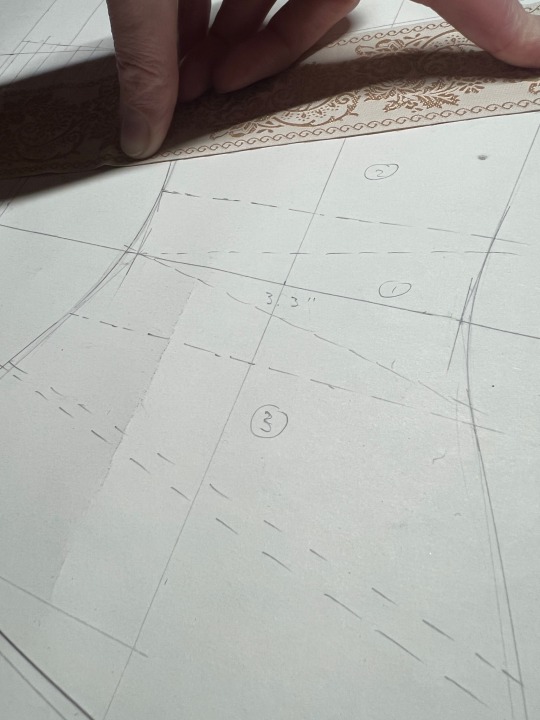

When it came time to construct I realised that my ribbon - so abstractly bought years ago - just didn't have the body to take this structure. Much too flimsy, much too synthetic. Fortunately I had a 50mm green grosgain in large quantity in my ribbon drawer. Given the merc-for-hire miliatry drab favoured by Helga, I thought the green alongside the pretty shell coloured floral made a lovely character juxtaposition.
I mounted my jacquard onto the grosgrain, creating a nice delicate border. If you look closely you'll see that actually there are too shades of green grosgrain here as I was about a metre shy of my preferred colour, but i figured it was close enough and minimally to just fake through.
These newly formed ribbons were laid out on my pattern, stitched carrfully together and then tacked all over to stop any irritating movement when working.
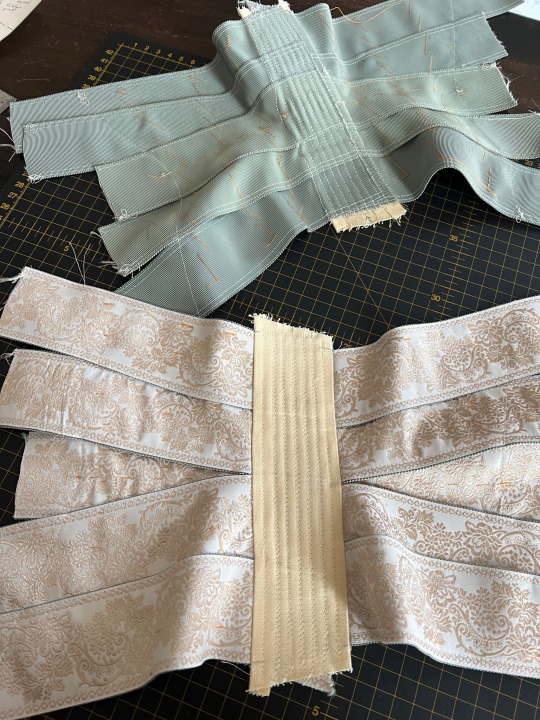

The boned panels - side, back and front - were two layers of herrinbone couil, trimmed with grosgrain and covered with main ribbon. The ribbon panels were first stitched to one layer of coutil, as you would with any garment. The ribbons were then quilted neatly and vertically across the width of the coutil panel to make sure that they are entirely secured. This was repeated for all panels; the side panel has two layers of quilte ribbon as a result.
As no extant example that I have seen to date has binding on these boned panels - naturally, it would add bulk and distract from the clean lines of ribbons - I decided that this would mean that I would sandwich and hem my boned panels for security. Each boned panel had its grosgrain trim and top ribbon tacked in placed, the the second layer of coutil was stitched and turned to the inside, folding the quilted ribbon very neatly inside. Boning was then inserted from the side and stitched into place rather than inserted into channels.

A lovely ivory powder-coated busk, and stitched over eyelets and Helga's vaguely turn of the century ribbon corset is all done!
References:
Underwear Fashion in Detail, 2010, Eleri Lynn
Corsets - Historical Patterns & Techniques, 2008, Jill Salen
Corsets & Crinolines, 2017, Norah Waugh
The Making of Atlantis - https://youtu.be/tvR9Zdp74fY?si=5mMV1AH6HLir2rNZ
How To Make A Basic Ribbon Corset, Sidney Eileen - http://sidneyeileen.com/sewing-2/sewing/corset-making/basic-ribbon/
An Edwardian Ribbon Corset, History Wardrobe - https://historywardrobe.wordpress.com/2014/04/10/an-edwardian-ribbon-corset/
#project: Helga Sinclair#project: ribbon corset#media: atlantis#cosplay#historical sewing#costume#historical dress#historical costume#Edwardian#making of#project wip#poetry in costume#long post
81 notes
·
View notes
Text
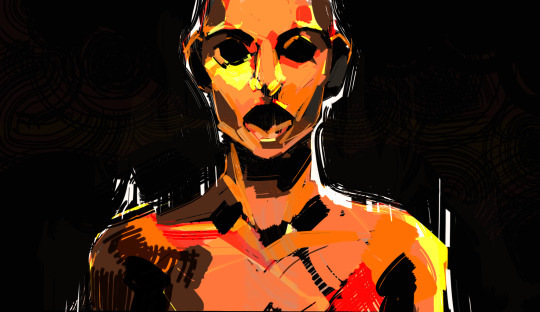
“Let’s go get dinner.” Suggested Sarah.
“Breakfast.” you corrected
Sarah placed a hand on your shoulder and shook her head. “Nah, babe.”
“At the Corner?” Damien hesitently asked, testing the water.
“Of course.” Sarah replied.
Damien groaned but nevertheless turned off the TV and went to get ready. You stretched and looked down at the stain covered clothes you were wearing. He was right, you did stink of weed. Definitely not ‘outside’ appropriate.
You threw back the last of your coffee before turning to Sarah, “Thank you,” you say in a voice intimate and small.
Damien was approaching the bathroom with his towel and products just before you shoved passed.
“Hey!” He shouted
“Tits are out!"
“You bitch!!” He scolded back.
“I need to stop smelling like weed. Won’t be too long.”
His groans grew quieter as he left.
You dropped your clothes and finally got to take a good look at your body. You were covered in burn scars. Flesh warped and transformed. Your nipples looked like half baked shrinky-dinks and your belly looked stretched and loose like you’d just given birth.
You felt for your lighter, the urge to smoke welling. Well, not the urge to smoke so much as the urge to cry, but a smoke usually helped you through that. Looking over at the empty shower, you couldn’t help but be overwhelmed by defeat.
Instead, you snatch a can of deodorant and bathed yourself in that. Throwing your clothes back on, you announce that you have freed the bathroom from your gargoilic clutches for Damien.
“Oh, okay!” he shouts from his room, with a dull tone as if you had never taken it from him.
You return to your room and try to find something to wear. All your clothes were piled on the floor, only moments ago exposed directly to your hotbox.
“Sarah!” you cry.
“Yeah babe?” she replies, relieving herself from beyond the edge of your door frame.
“My clothes stink. Can I borrow some of yours?”
The could see the cogs tick inside her head.
“I’ll do your laundry?” you bargain.
She looked over the floor blacked out by clothes and the half empty chest of draws, drained of its contents. “No you won’t. But find. The usual stuff?”
“Yes please.”
Without another word she leaves, quickly returning with a small pile of clothes: a pair of jeans, a flannel shirt, an overcoat and a bra far too large for you.
You toss her the bra back. “Nice try, but I can manage without that.”
“How cute is it though?”
“Very. And thank you.”
“Well, I figure you’re a bit traumatised. Least I can do.” She smiled sweet, “Oh,” she added. “Stop fucking with Damo. You know how he is.”
Half out of shame, but half out of a commitment to be subtler in your fucking-with, you nod and gesture for her to leave.
The weather had turned to a dull overcast, catching the orange of the evening sky. The three of your wrapped up to leave.
The walk to the Pub was pretty long, but it was a trip you were intimately familiar with. The three of your lived in the industrial district of the capital city. As you passed the brickfield, Damien spoke up. “Did you know that not all bricks are the same? A bricks deviation from the standard is measured by its Dimensional Quality Level.”
Damien always had something interesting to say about bricks.
“The category DW1 means that the height and width of a brick differs from the standard by less than 50mm.” He continued. “DW2 means there’s a difference of only 40mm. Anything larger than a DW1 is called a DWO.”
“What’s a brick that’s DWO?” You ask.
“I dunno. A rock?”
As you round the road to the Corner Pub, you’re shocked by the commotion. Voices roar and the streets shake. You all rush in to see what’s going on.
A television broadcast.
A pit opens in your stomach. You see a creature; a demon. With skin like magmatic rock that glowed in the night. Far away the beast appeared. Fire ripped from its mouth as it scorched the city.
Suddenly you were stood over Kata’s body. His empty skull staring back at you. It was blacked, and as dark as the earth around it. Embers glowed and smoke billowed.
You were frozen.
The figure you free approached before you again, emerging from beyond. You felt their warmth radiate over you as they approached.
“Thank you.” the You said.
Your heart got stuck in your throat. In a quivering voice said, “I need to go home.”
The You grinned a nasty grin. “Alright.” Your’s voice was like a cloud your thoughts were adrift on. “Come with me.”
You’s body changed. Stone grew deep within. Flesh grew thin and shined purple and grey. Skin bruised as the growing rock pushed against the boundary of You’s body. Their sides burst and then slipped away as a demon stepped free from its prison. The creature stretched deep and long for the first time in an age.
Without a thought you climbed on board. You gripped onto You tight. Their body began to glow. Their temperate grew until flames burst from where you touched them. But fire didn’t hurt anymore.
“Eartwhile.” You said.
“Yeah?” You reply.
“Erstwhile?” You’s voice was filled with panic.
Then you were back. Sarah had you by the shoulders. Slowly the voices of the Pub became distinct. “Are you okay?”
You looked back up at the Television. And there was You.
*****
Art by the outrageous @oni-ino
***Next Part******Previous Part***
40 notes
·
View notes
Text
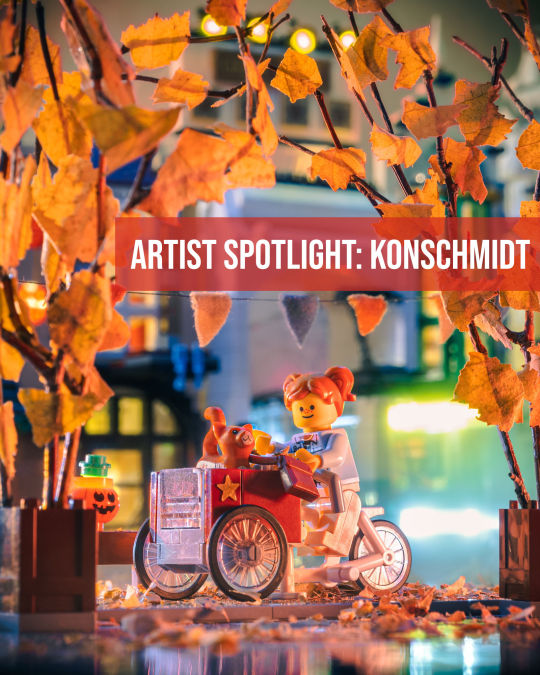
🤩 ARTIST SPOTLIGHT: konschmidt
Hello everyone!
It's time to direct the spotlight toward our community members, and today we will get to know better konschmidt!
"Hi, my name’s Konstantin. I have been passionate about Lego photography since 2013. Over the years, this hobby has grown with me and become an integral part of my life.
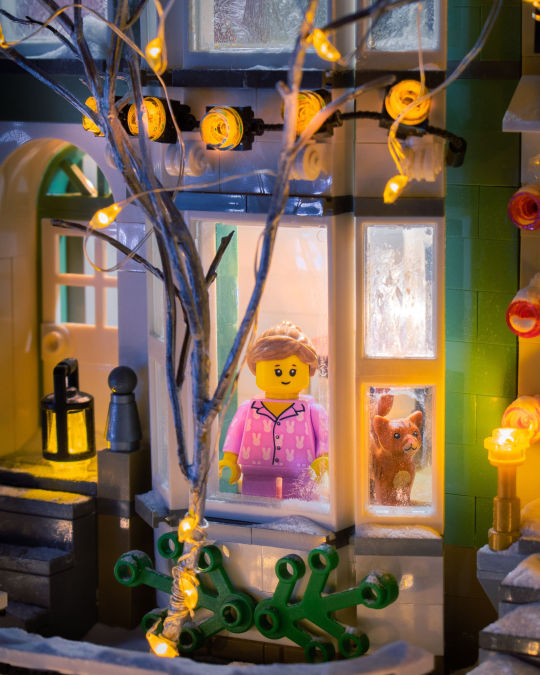
My photos capture the beauty of everyday moments where the characters enjoy life with their loved ones in various settings and seasons.
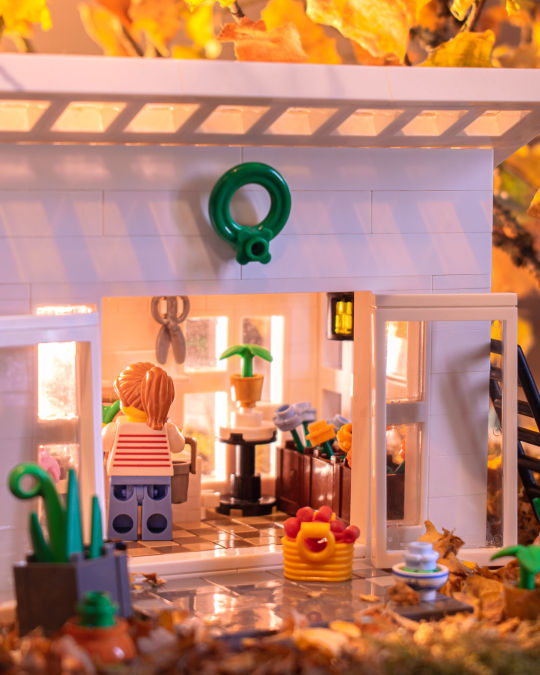
I especially cherish the annual Christmas scenes, where I portray the wonder of joy, warmth and coziness.
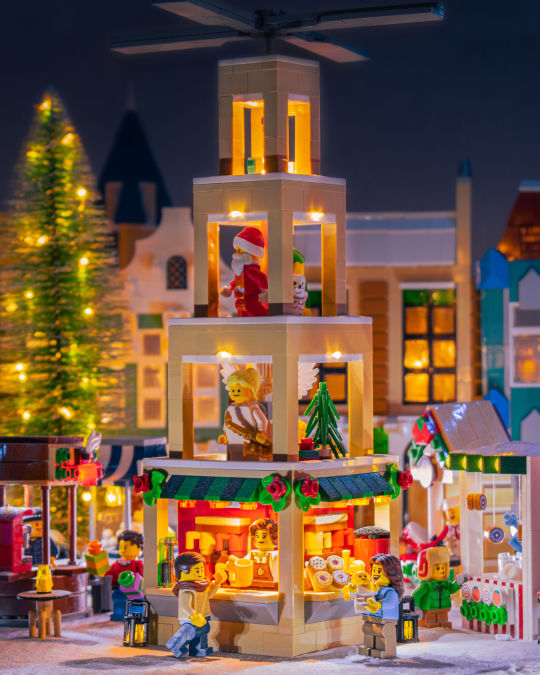
Most of my photos are taken inside, where I experiment with different lighting sources and natural objects. I also use water and baking soda to simulate precipitation.
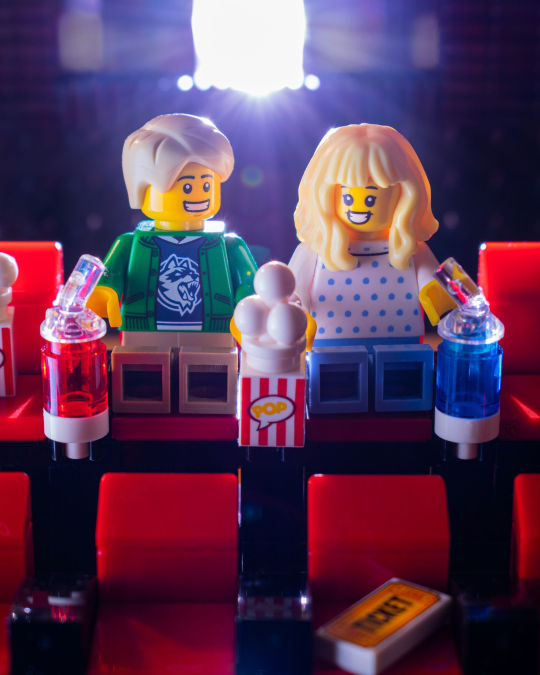
My goal is to achieve a natural balance between these elements and the Lego bricks.

Each photo is a long project. I photograph my own builds, so the first thing I do is sketch future buildings or vehicles, then I assemble them using 4 thousand Lego bricks. Next I choose minifigures and accessories.

I prefer simple figures with classic or modern Lego smile. After all, my characters almost always experience joyful emotions.
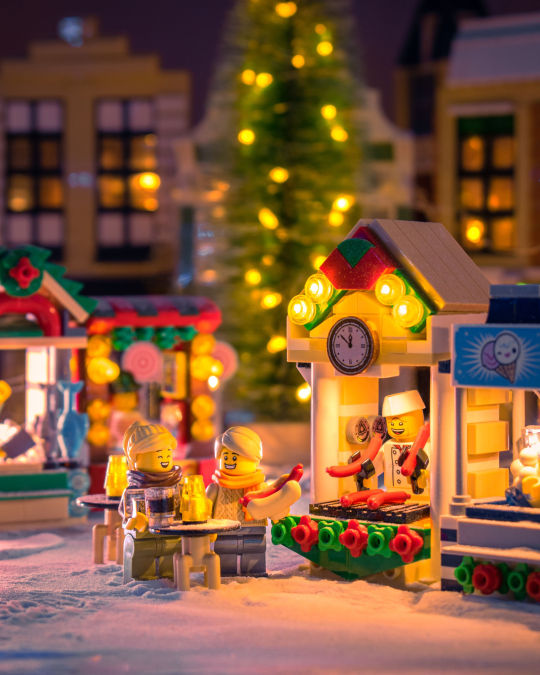
I enjoy sharing my process through behind-the-scenes videos. So along the way while photographing, I also shoot BtS content. For my photos I currently use Nikon Z 50 with a Nikkor Z DX 16-50mm lens. I edit my photos after a break. This helps me to be more objective about my work. Lately, I add more movement to my scenes since I started making small stop-motion videos. But to summarize, I consider myself a perfectionist who values quality over quantity.
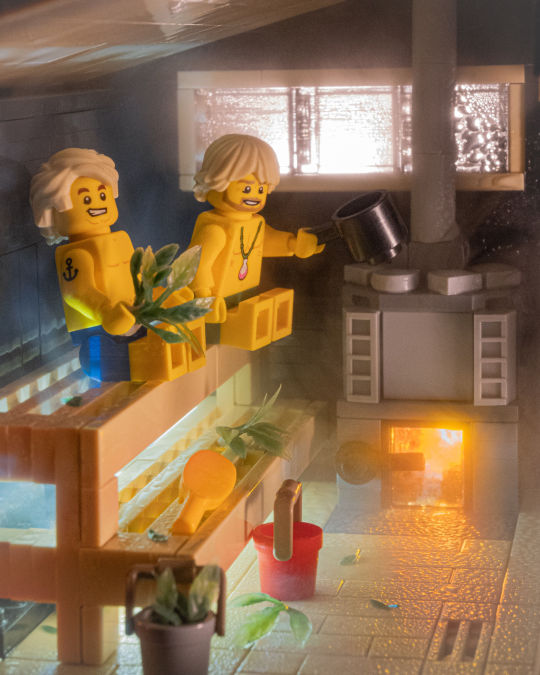
I’m very grateful to Brickcentral for giving me the opportunity to showcase my work!"
Thank you for accepting our invitation and let the community knows you better!
If you want some insights on the exclusive picture and for a better view of the others, head to our blog at https://brickentral.net/.
- @theaphol, Community Outreach Manager
#lego#lego photography#brickcentral#toy photography#legophotography#afol#toyphotography#minifigures#brickcentral member#lego christmas#christmas
45 notes
·
View notes
Photo

Late afternoon on the Panther Hollow line in Pittsburgh, Pennsylvania. Circa 1975. Taken with a borrowed Leica M3 and Summicron 50mm f/2 lens.
Coal northbound, limestone southbound.
91 notes
·
View notes
Text

Olympus OM2 + M. Zuiko 50mm f1.8
- Fujicolor C200
Novi Pazar is a town in Serbia, in the Sandzak region, with a rich history throughout the centuries. These are a few of my photos taken on film.
#architecture#novi pazar#srbija#balkan#street photography#analog photography#film photography#fujifilm#fujic200
14 notes
·
View notes
Text
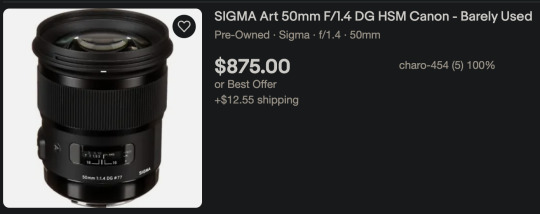

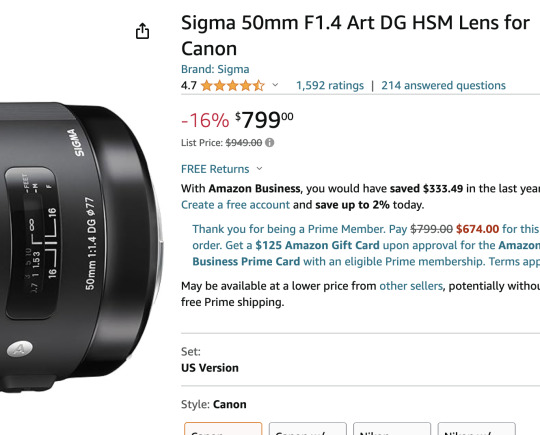
I am so confused.
Even when this lens was first released it was $850 brand new.
Does he think people aren't going to check current prices? Did he get scammed and overpay originally? Not to mention eBay gives you a suggestion for pricing.
I really wish I hadn't sold my lenses. There was a point where I had a major decline in my health and I could no longer make comedy for my main website. At the same time, my parents were getting sicker and needed more help. We were also struggling financially. I was so depressed and I was sure I'd never do photography again, so I sold most of my lenses.
We needed the money at that moment, but in the grand scheme of things, the lens money barely made a dent in our situation. Not to mention, we got a small inheritance from my grandmother soon after, so that increased my regret. It took me years of scrounging and saving to build up a collection of 5 lenses. None of them top of the line, but all of them a good value for their performance.
Thankfully I kept the lens I used to take pictures of Otis—my "puppy lens." But my ultra wide, my macro, my tele, and my portrait lens... all gone.
And now I am trying to figure out the cheapest way I can do what I want to do with photography and I'm remembering just how expensive this hobby is. But I think I need to figure this out because I have had a substantial boost in my mental health since I started taking photos again.
A good 50mm could serve several roles. I can add extension tubes for macro. It is about 75mm on an APS-C camera, which is good for portraits. The wide aperture would allow low light photography. Combined with my Otis lens, all I'd be missing is telephoto and ultra wide angle, but honestly I never did much of that anyway. Though ultra wide angle photography is probably the most fun you can have taking pictures—even if the photographic uses are rare.
I did get a Nifty Fifty for my trip to Orlando. I wanted to see if I could get away with using a $100 lens. For the price, it is surprisingly good. And it is the first lens I recommend to anyone starting photography—as almost every camera brand has its own version. But I had several issues trying to make it work for my needs.
It's not very sharp, which is actually fine for shots taken at a distance, but would be a deal breaker for product photos and macro shots which are very close up. Those require as much detail as possible, especially if you need to crop. When you are trying to show people the fine hairs on a bee's body, a soft image just isn't going to have the same impact.
It also does not nail focus consistently and it back focuses (it focuses more behind than in front). Which is a deal breaker for my efforts to use less energy. When I did my portrait shoot with Katrina, I had to do many test shots and look at them on the computer to make sure I was getting them in focus. I was going back and forth and getting up and down. In the end I had to use a smaller aperture and higher ISO to get increased depth of field. And even then the tip of her nose was soft in the photos. Not to mention the added noise from raising the ISO.
This Sigma is a wonderful lens. I'm trying to find a good deal used, but it's still out of reach for now. I have no idea what my financial future is right now and until I know for sure that my brother will release my inheritance in March, I have to be more careful with my budget.
I am going to sell all of my studio lighting gear and use those funds to help me set up a new studio upstairs. I'm hoping that will cover the new lights I will need, but I don't think it will be enough for a lens. Someone suggested a site where I can turn my yard into a dog park, so I am looking into that. I might also see if I can get some gigs restoring photos for people, but it is so difficult finding clients.
Every problem has a solution. And maybe the universe will do me a favor and keep my brother from being terrible just this once.
13 notes
·
View notes
Text
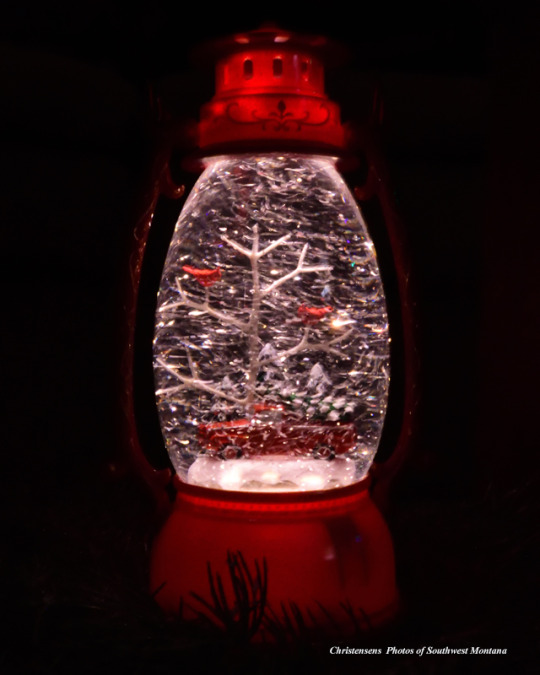
Merry Christmas
Our snow globe taken at night.
Nikon D500, Manual Mode, Nikor 18-50mm VR II, F/29, ISO 5000, ET ¼ Sec, Focal Length 29mm, Handheld, Vibration Reduction on
#christmas#Merry#Snow#snow globe#Night#beaverhead#beaverhead-deerlodge national forest#photography#photos of southwest montana#dillon#brad christensen#montana#photographer#winter#winter time
8 notes
·
View notes
Text
I went Full-Fuji! (GFX One Year Review)
One year ago, I decided to ditch my Nikon DSLRs for a Fujifilm GFX 50R.
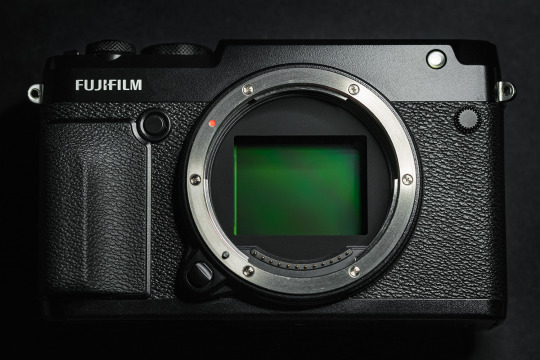
The GFX's sensor is larger than a full-frame sensor with a crop factor of 0.79
A little over a year ago, I still was using a few Nikon DSLRs to do just about anything. For portraits and landscape, I had a very respectable D810. Enough megapixels to provide some room for cropping and a decent dynamic range for most situations. For action and hobby-wildlife I had a D500. A durable mini-tank with performance that to this day would be hard to dismiss even in the light of mirrorless flagship innovation.
However, the question of my camera-future slowly crept into my mind. Was it time to change and upgrade into the Nikon Z system? Switching to a Z7 would indeed have been a sensible move, adapting older lenses while getting the sensor of the D850 in a smaller, cheaper body with an ecosystem of native lenses with the optical quality up to specs for the next decade. On paper and elsewhere, it should have been the obvious choice. Yet my answer to this question was a resounding "no" and I went against reason to set my sights on a Fujifilm GFX 50R. I took that model over the S because I enjoy the rangefinder form factor.
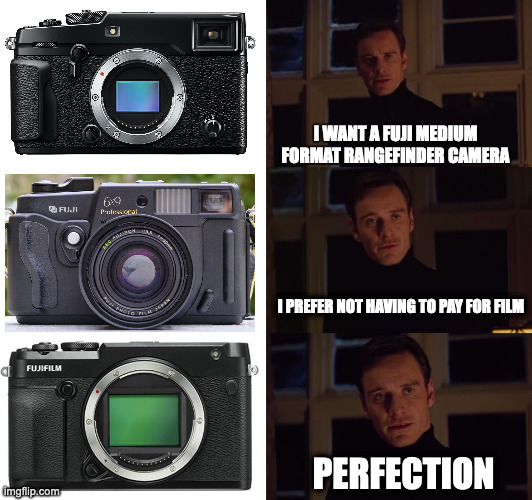
In hindsight, the smartest of all moves would probably have been to remain with what I had, adhering to the ancient photographic wisdom: "lenses are more important than cameras". My kits could have kept me satisfied for probably another 10 years if we are being honest. I could have stayed within the F mount ecosystem and could have taken advantage of its downright insane price drops to get top-of-the-line lenses for peanuts instead of selling the farm on a whim, however carefully considered it might have been.
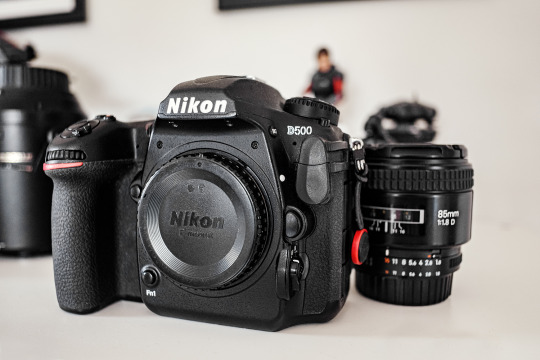
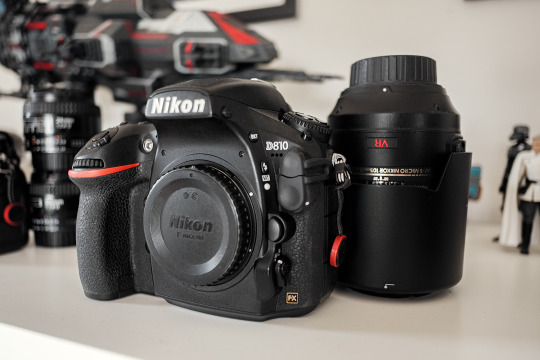
These old and trusty Nikon DSLRs got sold off to finance the 50R
The truth is that after fifteen years of walking the beaten paths camera-wise, I wanted to shake things up. I longed for a change of pace. I felt confident enough in my practice to know what type of photography I would want to engage in for the foreseeable future. I also felt confident enough that I'd be able to answer the call of the occasional assignment using a camera system that would have a non-negligible amount of drawbacks. The challenge even seemed like a fun new variable to add to contracts. Thus, the choice I made for my photographic future has been one born out of love rather than made from a place of reason.
When I think of good photographic memories involving the process — how photography is approached with mind and body — I immediately have two very different ideas jumping to mind and each has an ideal type of tool that best suits it. Neither of these are about efficiency. Neither of these are about performance beside niche-performance, perhaps. But that, is more of an acquired taste and it also comes at a price, but we'll see about that later.
The first idea is an instinctive and spontaneous approach, form of feral and visceral active meditation, akin to Daido's rabid dog method; roaming the streets clear of thoughts and letting the subconscious take the helm. Shooting, shooting, shooting and discovering everything later. No plan, only image-taking. No clear framing, no image-reviewing, no judgement to pass, no threads to weave. Only arrange and make sense later, if there's any of that to find.

Results using the "rabid dog" method, using a Fujifilm X100, 2014
For this type of photography, the Fujifilm X100 was the tool that instantly clicked with me. The "poorman's Leica" is an apt way to describe what the X100 represented when it came out. I got the original 12mp camera in 2012 as a fun but capable toy to bring along my Nikon D700, until the shutter release button (which also is the on/off switch) broke off in 2020 after one power-up too many. I have since replaced it with a Fuji X-Pro 2 with the XF 18mm F2, 27mm F2.8 and 50mm F2 lenses. To this day, such small Fuji bodies are my tool of choice for this kind of photographic mood (and of course, for family pictures).

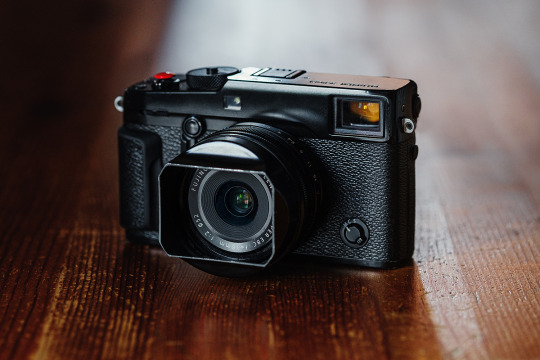
Fuji X100 later replaced by the X-Pro 2 as street photography go-to.
The second photographic process that I tend to naturally gravitate towards stems from my first year of photography school, during which all projects had to be done using film and would have us deal with the whole process (that is to say; shooting, developing, printing, framing, and displaying our work ourselves). It is with nostalgia that I look upon the memories from that time.
There sure is something inherently different in figuring out what to do with the exposures one has left on their film than being able to inconsequentially shoot within two hours three thousand pictures through which you can almost immediately browse. The latter is of course more practical and a welcome technological improvement, but the former brings an unhurried and deliberate focus that I find both refreshing and appealing.
When I think of my strongest recollection of touching the quintessence of the analog experience, the days of using my Mamiya 645 immediately come to mind. Such sluggish, heavy-as-a-couple-bricks box-machines compel one to being careful and purposeful every step of the way. I need that too.

Mamiya 645 Super, since sold to finance GF lenses.
I have for the longest of time considered getting a more serious medium format camera but some quick-math with the price of film, chemicals and photographic paper made me realize that digital medium format was actually much more worth the investment while most definitely retaining some of the core characteristics of its analog counterparts. My love for the film process couldn't hold up against all the advantages of going digital, especially when buying second-hand.
Using medium format always felt like journeying inwards. It has allowed me to spend long hours in daydreaming-states paradoxically laced with an acute awareness of my surroundings. When thinking about medium format, I can recall the soul-washing quality of some of the winds that swept my cheeks while I was standing next to the tripod waiting for the exposure of the 50iso film to finish.
States of contemplation. Another kind of active meditation?
Of course, any camera can provide this type of feeling, but of all of the digital cameras available, medium format is the one type that will weigh you down the most and dictate the pace you work at.
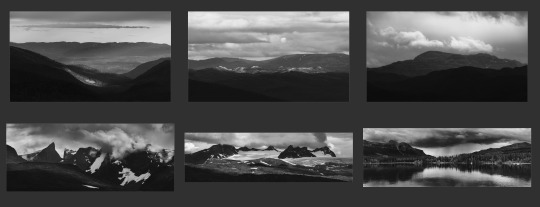
Telepanoramas created with the Fujifilm GFX 50R
Notice how these two ideas are almost the ends of a spectrum?
The first one is nervous and agitated, highly reactive, while the other is composed, meticulous and invites introspective fugue-states, yet they both share one vital element in the way that I approach them in that they take the practical considerations out of the picture to leave more space for what is going on within me.
The setting up of the camera or lack thereof becomes an excuse for something else. Maybe it isn't a surprise, that my adhd-ridden brain experiences this inexorable attraction for both these approaches. For they are in essence, two sides of the same coin, with each side matching different, specific and fluctuating needs.
Let's dive in!
After selling my DSLRs, I started looking for a good second-hand candidate. After a month or so, I found a barely used GFX 50R sold with a 50mm 3.5, a couple additional batteries and an L-bracket to boot. The price was rather attractive for the bundle, so it seemed like the time to take the leap. After a short but excruciating wait for the package to arrive, I finally was able to join the larger-than-35mm-sensor club.

How it started
My first few months with the camera had me immediately blown away by the difference in output. The higher resolution and the sensor's qualities made the (very much existing) noise hardly noticeable when downsized to small printing or screen-viewing sizes. What also immediately struck me, was the looks of the images the camera produced. Images taken with the GFX feel more "3D" to me.
It is a very peculiar and hard to describe feeling. I suspect it is a combination of factors; the depth of field of the larger sensor and the very smooth transitions between what's in focus and what is not that it permits, the colour depth, and the quality of the optics. I've seen many Youtube reviews, read forum threads or been in discussions on Discord about GFX cameras where people (who more often than not don't own one) will maintain that these qualities don't exist at all. After a year in the system I can confidently state that they're wrong.
I can't really put my finger on what causes these differences as I am not as tech-savvy as I could be, but it is still clear as day. To use a pretty apt analogy, I would say that the difference between full-frame and (crop) medium format is akin to the difference between aps-c and full-frame cameras. Are they deal-breaking? Not necessarily. For some people they can be. Are they noticeable? Definitely. It is especially funny to me to see medium format cameras being dismissed by such a many full-frame shooter who at the same time, is constantly bashing aps-c sensors.


Don't you love to pixel-peep? Omnomnom (imagine with 102mp!)
This being said, I will always fully stand by the statement that full-frame cameras are the more sensible choice as they are better all-rounders by design. High-res cameras like Sony's A7RV or equivalent are also better high-iso performers than the aging IMX161 sensor that the GFX 50 series uses, which sees its operational limit at around 6400iso (but the GFX 100 would be another matter entirely). A top-tier full-frame camera is evidently more practical, lighter and cheaper without any deal-breaking image quality difference to what the medium format niche can offer. When all costs are factored in, the choice would seem self-evident. If you consider medium format, it should be understood that you know this before committing to any bigboy sensor. Or don't heed this and make people who buy second hand happy, as GFX gear loses almost one third of its value once it hits the second hand market (a consequence of too many people jumping on the medium format bandwagon only to realise — way too late — that it wasn't for them).
Are we cooking yet?
I need to talk about the GFX's files for a little bit; I'm a raw shooter only — which hopefully you'd have guessed — (in my opinion anyone buying into a medium format to shoot jpeg must have cognitive issues or too much money, or possibly both) and I have to say that when I opened the raw files to give the sliders their very first +100/-100 or +3/+4 EV from base iso (or any combination of these) I was utterly floored by how well the files could handle such an ungodly beating.
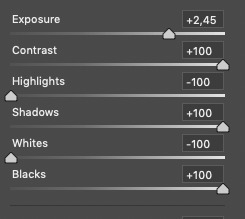
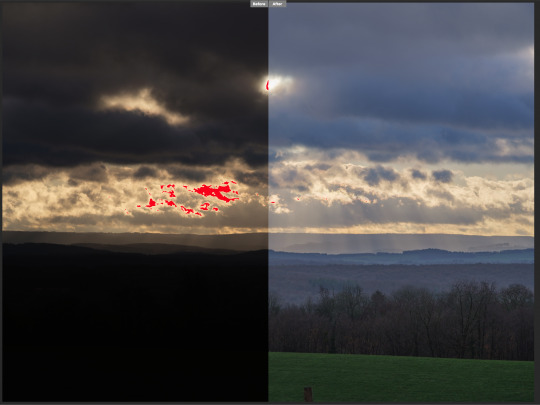
This isn't a joke, I promise.
This type of camera makes the slider memes come true, to a point where for the first few months, my ability to edit properly was severely impaired by the glee I experienced while pushing everything way too far. I believe it is not an uncommon symptom at the start of a medium format journey. It takes a while to come back from that and simply be able to tell yourself "ok here, maybe less dynamic range would be a good edit". I'm getting better at this as I consciously try to avoid overcooking.
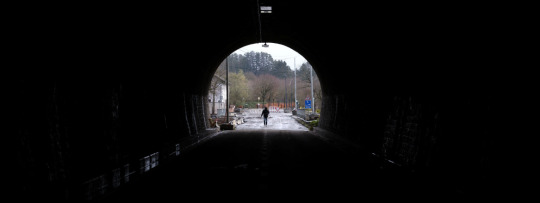
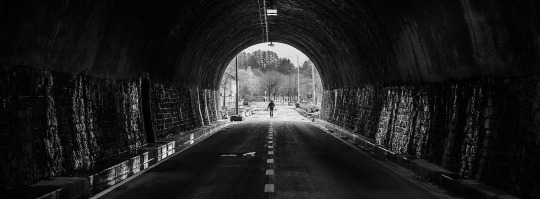
Clean recovery? Can do!
On the image-taking side of things, the major change for me with regards to file-handling is that I'm almost systematically exposing for highlights now. Adding 3EV and boosting shadows in post when shooting at low iso is inconsequential in terms of image quality as there won't be any visible noise whatsoever on the output, unlike my aps-c cameras that will show noise even at base iso. Similarly to many other aspects medium format manages well, this is something I got used to very quickly.
To adapt or to not adapt, that was the question, here's my answer:
At first, I tried adapting my old Mamiya 645 lenses to the 50R. It was useful in the sense that it allowed me to enjoy different fields of view at no cost but it quickly felt like a plaster on a wooden leg. I'm not someone who enjoys the manual focusing as a default and I've grown more and more intolerant of the optical flaws of older lenses as time went by. I realised that it wasn't a viable long term solution for me and quickly chose to sell all my Mamiya cameras and lenses to finance native glass for the GFX.
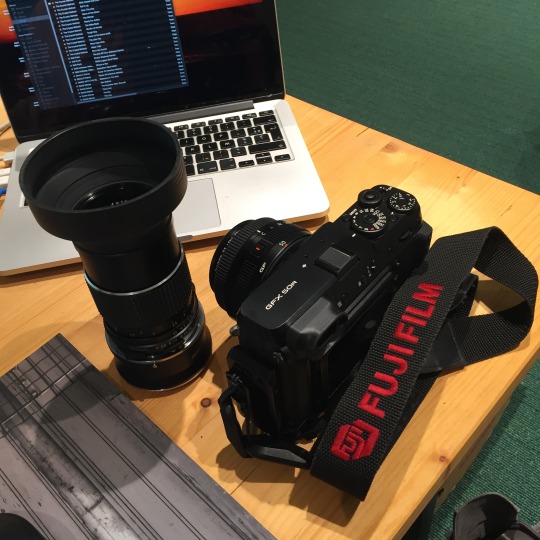
My experience adapting? It was alright but not at all ideal.
Which lenses then?
Getting into the GFX system I promised myself I would make no compromise whatsoever on optical quality and directly aimed for the 250mm F4 (mainly for tele-landscapes) and 110mm F2 (mainly for portraits). The grind felt long but it really wasn't, as I managed to secure both lenses from the second hand market within 6 months. It is only later that I added the 35-70mm "kit" lens to my arsenal to fill the wide-angle gap I had. As I seldom feel the need to shoot wider than short-tele fields of views, this is more of a lens of convenience.
The difference between adapting older lenses and using native glass was night and day to me. Two things made this the better choice in my view: first, I've been actively seeking the "clinical" quality of modern optics. I do not care much for the "character" of older lenses especially not if the word is used to help one overlook a lens' unforgivable flaws. Second, while there sure are lenses worth adapting out there, this come at a cost for the adapting to be worth it (the cost of an AF-capable adapter and of course the cost of the lenses themselves) which I saw as a waste of my limited resources. I told myself I wasn't going to make compromises, remember?
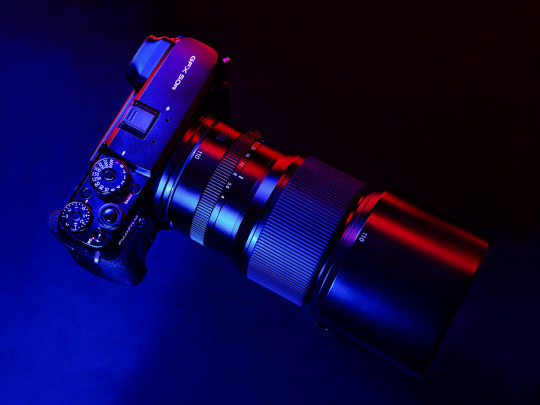

One year after switching, I am now knee-deep into the system, having sold most of my Nikon gear as well as my Mamiya medium format film-cameras to acquire some of the incredibly hard to resist GF lenses.
After a year of transforming a heap of dormant gear and side-gig revenue into new lenses, I also noticed that the representation I had about the worth of money also changed radically when gear was concerned.
A little over a year ago, an XF lens priced 800€ definitely seemed like a steep investment I'd try to find alternative choices for. Nowadays, 800€ is a mere budget lens in my mind. Seeing the price tags of GF lenses doesn't make my head spin anymore and this is somewhat worrisome for the thrifty Dutchman living in the back of my brain.
With the announcement of the 500mm F5.6 lens being in development (a focal length I definitely miss from my Nikon days, I'm a sucker for ultra-telephoto landscape photography), I fear I will manage to push my monetary boundaries further back yet, which I will help achieve by selling my X-T3 video-oriented kit.
APS-C: you're dead to me.
An unforeseen consequence of my GFX switch was that my aps-c cameras were pretty much relegated to the bottom gear drawer and seldom used barring a few notable exceptions (such as a wedding gig) where the need for its autofocusing speed was greater than the need for image and file quality.
To reuse the analogy I made earlier; my X-Pro 2 and X-T3 have become to me what a micro-four-thirds camera would be to a full-frame camera user. Getting into Fujifilm's medium format system prompted me to think about how I use my cameras and to what end. The realisation that there is a clear split in my photographic approaches I evoked at the very beginning of this article is the result of that thought process.
Although I will sell my X-T3 because it feels superfluous and I want to stop my video gigs completely, (and because my need for GFX lens money is still great), I would never part with my X-Pro 2 nor the few XF lenses that I have as they serve a totally different purpose to that of the GFX's.
Having a compact, fast, discreet yet still capable camera that can be casually put into a pocket is an advantage that I would be a fool to part with. The X-Pro is a more practical choice for street-photography, documentary in less-than-favourable conditions, as well as for family pictures, when packing a brick of a camera and two bricks worth of lenses for a walk in the park in suboptimal weather would be met with a tired roll-eye from my spouse.
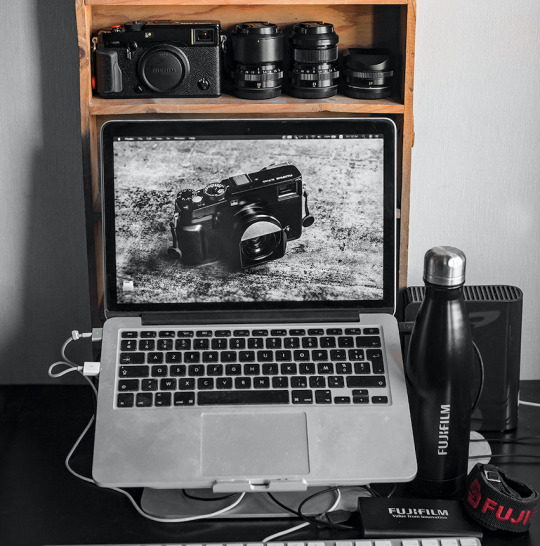
My dear X-Pro, I'm Never Ever Gonna Give You Up
Of course there have been many occasions for which I have chosen to take the challenge and went into these situations with the GFX. However, I wouldn't want the GFX to be the only option at my disposal in such cases.
For example, during the last wedding I shot, when the dining room got darker and the guests started moving around a lot (and dancing), the switch to aps-c cameras was absolutely necessary because of how difficult it was to consistently get acceptable results in poor light and with subjects making erratic movements. When you are held under a result-delivering imperative, you have to be able to honour it.
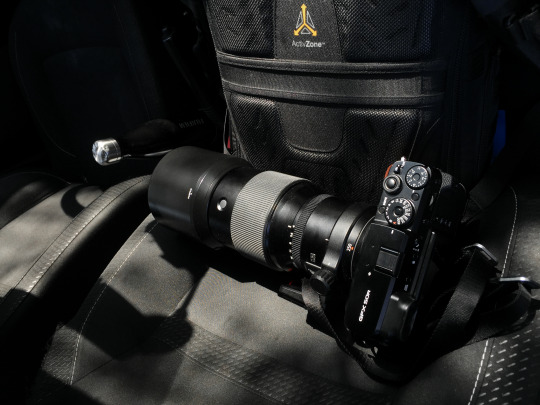

Packing a Fuji GF or Fuji X kit can be a slightly different experience
"Megapickles don't matter!"
This was an idea that I lived by just a few years ago. I changed my mind. I still believe that megapixels don't matter when you don't have them. Just like one should shoot with the camera one has / is able to afford. It doesn't matter in the grand scheme of things but all these technical niceties just make one's life more comfortable. Cropping, denoising through file reduction algorithms, or enjoying detail endlessly because one can, these are just the icing on the cake. I just happen to like my cakes with more icing than cake now.
Regarding resolution specifically, it's been another area in which there seems to be no possible coming back. Nowadays, every time a manufacturer announces a new camera and I discover they plan to fit it with a 24MP sensor I dismiss the information entirely. It doesn't register anymore. 32-36 is the new 24 in my mind now and it's sometimes difficult to come back from those expectations.
This being said I have no issue using lower resolution aps-c that I own and could perhaps even have fun with a X-Pro 1 because then the output quality wouldn't be my prime concern. It is only concerning new releases that my interest dips firmly for "low" MP cameras.
Did I tell you that medium format AF sucks?
Before I conclude this one-year review, let me hammer this point in with a two-handed mace; it can't be understated, especially for the GFX 50 series which uses contrast detection — the autofocus will throw you back to the early 2000s. Be ready to be stuck on single point, single AF mode because that's the only thing that will be consistent enough.
Then let's not forget other factors that add to the bad and make it worse; the shutter lag is half a second, the sensor readout speed is 1/4th of a second, and the time the shutter takes to clear the large sensor in combination with the camera's high resolution means you'll need higher shutter speeds in order to get rid of motion blur when shooting handheld (count about one stop faster than usual). Those would be valid reasons as to why a less niche camera system makes more sense for a lot of people.
The final comment:
Despite its sometimes dramatic drawbacks, I definitely have found the pleasure I sought when I originated this system switch. The change and the adapting my process is engaging and makes me think more about what I do, what I use, when and why. This is a win on its own.
All in all I feel like I am still at the very start of my journey though I've had the opportunity to test my GFX 50R in a wide array of situations in the past year (portrait, landscape, documentary) it seems like the way forward is clear and also opened for plunging deeper into this incredibly fun (but needlessly expensive) rabbit hole.
The upcoming 500mm, the prospect of finding an original GFX 100 (with its weirdly appealing tiltable EVF) are ideas that will — for the foreseeable future — definitely keep pulling me back in (and emptying my pockets).
Fun! Fun! Fun!
8 notes
·
View notes
Note
Hi! May I please ask what camera and lens you use? ❤️
Hi! I primarily shoot on the Canon R6, and occasionally the M50. A majority of the photos I've posted here prior to June 2022 were taken on the Canon 6D.
My go-to lens for the R6 (and the 6D) is the 24-105mm f/4L. I use it probably 90% of the time because it's pretty versatile. I also use a 70-300mm f/4-5.6. Very rarely, I'll use the 50mm f/1.4 or the 40mm f/2.8 pancake lens. As for the M50, I keep the 22mm f/2 on it 99% of the time, and very rarely use the kit lens.
Admittedly, I feel a little weird answering this question because although I use my gear for my hobby photography (aka the fuel of this blog), the investment was both financed by and for the sake of my part time paid work.
Worth noting that some of my favorite photos I've ever taken were on a Canon T3i and kit lens I was gifted over a decade ago (my first camera).
10 notes
·
View notes
Text
Yvette Heiser - shares top photography tips for new photographers.
Great photographers always collect photography techniques and use them to surprise their fans and the general public. They often share it with other photographers and post it online to motivate young and new photographers. This concise, easily understandable photography advice covers everything from composition and creativity to basic camera techniques. These should be very beneficial to you as you learn photography. Here are some great photography tips from Yvette Heiser. You can use these tips to level up your photography game. Also, read Yvette Heiser Texas – The Art of Seeing: Mastering the Basics of Photography to learn more about the basics of photography.

Tips from Yvette Heiser:
Work with your composition.
To take captivating pictures, you must be involved in your actions. Don't just pass by without thinking. Rather, consider your composition and work to get the best possible images.
First, you need to understand the fundamentals of taking well-composed pictures. Avoid using the frame's edge to crop out significant portions of your topic. Maintain level horizons and make composition adjustments to remove any distracting elements from your shot. Check to see whether your picture has harmony and simplicity.
If the initial attempt at taking the photo doesn't turn out well, keep trying until you get it just right. It is very simple to stop shooting when something appears excellent, but if you take a moment to think through a few other compositions, there's a strong possibility that one of them will turn out better than the first.
Take your time
If you're not careful, making mistakes when taking pictures is easy. The easiest approach to avoid this is to always go at a slower pace and take your time, especially when you are initially starting out with photography.
Check your camera settings again first. Something is seriously wrong if you're taking photographs outside on a sunny day but using the same settings you used to take pictures of the Milky Way last night. Take your time and move slowly to get it right. Always examine the lighting, autofocus, and composition.
Move your feet
While taking photos, it's simple to become stationary. Avoid falling into its snare. Instead, move as much with your feet. Move forward and backward, climb atop objects, adjust the camera's height, and perform any other necessary actions, but never stop moving.
If every shot in your portfolio was taken at the same height without any experimenting, you're missing out on some amazing shots.
Pay attention to the edges of your composition.
It is helpful to focus on the frame's boundaries when framing an image. Put simply, your photo's "feel" is greatly influenced by the edges!
To begin with, ensure that your subject has adequate breathing room and is not pressed up against the photo's edge.
Know when to use a flash.
Flashes aren't limited to dimly lit areas. If you require additional light, they are excellent. Obtain an external flash, aim it toward the ceiling, and use a relatively long lens (50mm or more). Your event images will be the talk of the town, wowing everyone you know. It's the simplest approach to achieving success without having any prior experience in the field.
Final thoughts
These are the latest photography tips Yvette Heiser have to share. Read Yvette Heiser - How to Be Unique As a Wedding Photographer? If you are interested in wedding photography.
5 notes
·
View notes
Text

I have been going through all of my photography and just ran across this one of Daniel Ellsberg yesterday. It was taken in Civic Center Plaza in SF after he spoke at an antiwar rally in 2010. He was very kind. Thanking you with a heavy heart today. RIP. Canon AE-1, FD f/1.4 50mm, Kodak Portra 400.
#daniel ellsberg#protest#san francisco#photographers on tumblr#original photographers#women street photographers#photobyvaleriejcochran#canonae1#filmisnotdead#believeinfilm#portrait
15 notes
·
View notes
Text
One of my earlier photos, taken with my brand-new (at the time) 50mm f1.8 lens.
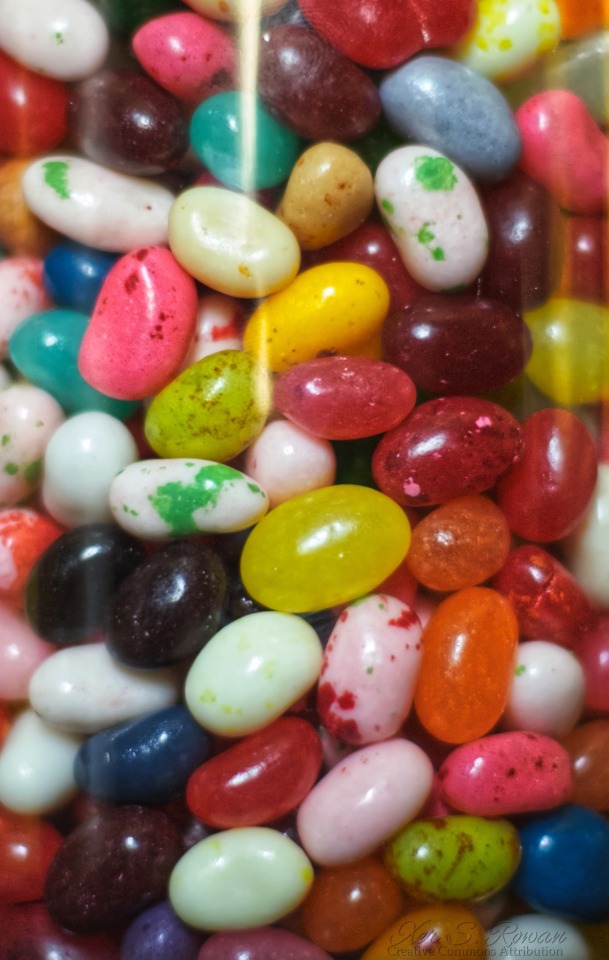
Photo by Xer S. Rowan, Creative Commons Attribution license
I take photos for the love of photography and share them under a free-to-use-as-long-as-I-am-properly-credited license. I'm disabled, neurodivergent, and living on a poverty-level fixed income. My linktree has a couple of wishlists, if you'd like to enrich my life a little.
#jelly beans#candy#colorful#jar of jelly beans#creative commons photography#free stock images#original photography on tumblr#creative commons#free photos#photography
3 notes
·
View notes
Text

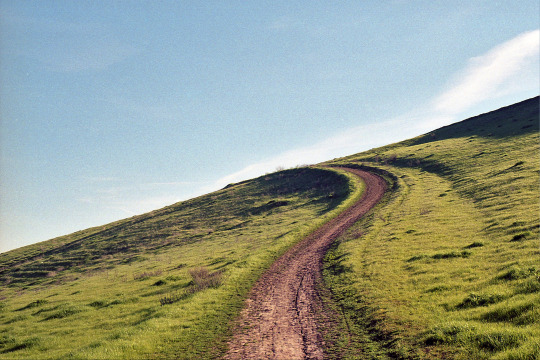

Taken on my Canon EOS 500n with a Vivitar 50mm f/1.8 lens on Lomo ColNeg 400 film.
I used a circular polarizing filter to really bring out the landscape's colors.
#landscape photography#nature photography#35mm photography#color photography#film photography#filmisnotdead#original photographers#35mm#35mm flim#landscape#hills#hiking trail#analog photography#nature
24 notes
·
View notes